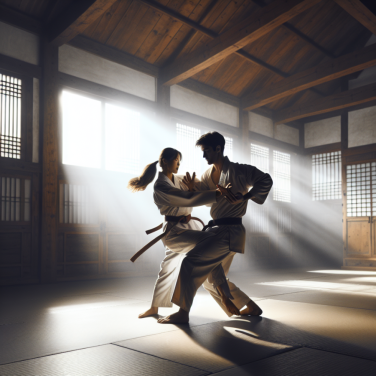Mastering the Tightrope: The Art and Technique of Slacklining
Slacklining is an awe-inspiring balance sport that involves walking on a narrow, flexible piece of webbing which is low-stretched between two anchors. While it can be similar to tightrope walking, slacklining is distinct due to the dynamic nature of the line, which is not rigidly taut but stretches and bounces like a long and narrow trampoline. This activity, which began as a pastime for climbers, has evolved into a full-fledged sport with a variety of styles and an international community.
The technique of mastering slacklining is as nuanced as it is challenging. To start, one must choose the right type of line. There are several kinds of slacklines, each designed for different styles and skill levels, including the low and relatively stable beginner lines, the dynamic and bouncy tricklines, the long and tensioned highlines, and the ultra-thin and challenging rodeo lines.
Once the type of slackline is selected, setting it up properly is crucial. It must be anchored securely to trees, poles, or other solid structures. The tension should be adjusted based on the intended use. Less tension allows for more dynamic moves, while a tighter line is often better for beginners or those focusing on walking and static poses.
After setting up the line, the next step is to get on it. Beginning slackliners often start by sitting on the line and then gradually working up to standing. Initial attempts are typically marked by the line swinging wildly, which is a natural part of the process. It’s important to keep one's center of gravity over their feet and to use their arms and core to maintain balance.
One key to becoming adept at slacklining is learning to embrace the fall. Even experienced slackliners fall off the line frequently, and part of the training is to learn to do so safely, by falling away from the line and avoiding any twisting that might lead to injury.
Another significant element of slacklining is the mental aspect. Practicing mindfulness and focus is essential, as a wandering mind will often lead to a loss of balance. Deep, steady breathing helps to calm the mind and steady the body, aiding to maintain focus and poise on the slackline.
As slackliners progress, they often explore different styles of slacklining. Traditional tricklining involves performing static poses, bounces, flips, and spins. Longlining and highlining require a different approach focused on endurance and control over longer distances and at greater heights.
Read also:
Star Power Trap: How Celebrities Lure Fans into Scam Coins
Slacklining for Beginners: Finding Your Balance and Pushing Limits
As a beginner in the world of slacklining, you might find the idea of balancing on a narrow piece of webbing stretched between two anchor points a bit daunting. Don't worry; everyone starts somewhere. With patience and practice, you'll soon be pushing your limits and finding your balance both on the slackline and in life.
When you're just starting, it's essential to understand that slacklining is as much a mental exercise as it is physical. The practice demands your complete focus, drawing you into the present moment. Here are some tips to get you started and help you progress safely and enjoyably.
### Choose the Right Equipment
Your journey in slacklining begins with selecting the right equipment. A beginner's slackline kit typically includes a line, tensioning mechanism, and tree protection. Look for a 2-inch wide line, which will provide a broader surface for your feet and better stability. As you gain confidence, you may want to try a 1-inch line, which is standard for highlining and tricklining.
### Find the Perfect Spot
A perfect slacklining spot is flat with two sturdy anchor points, like trees, that are about 15-30 feet apart. Ensure the trees are thick enough to support your weight without damage – typically, they should be at least a foot in diameter. The lower the line is to the ground, the less intimidating it will be, so start with the line at about knee height.
### Safe Set-up
Always use tree protection to prevent damage to both the trees and your slackline. Follow the manufacturer's instructions for setting up your slackline. It should be tight enough that it doesn't touch the ground when you stand in the middle but not so tight that it lacks the necessary flexibility.
### Step-by-Step Approach
Mount the line by placing one foot on it while using a friend or a slackline pole for balance. Stand close to one anchor point to minimize the line's movement. When you're ready, stand up slowly and transfer your weight onto the line. Your arms should be overhead, creating a ‘T’ shape with your body for balance.
### Maintaining Balance
Focus on a single point ahead of you to help maintain balance. Keep your core engaged and your legs slightly bent to absorb the movements of the slackline. Try to relax as much as possible – the more tense you are, the more the line will shake.
### Walking the Line
As you gain confidence in standing, start to walk.




